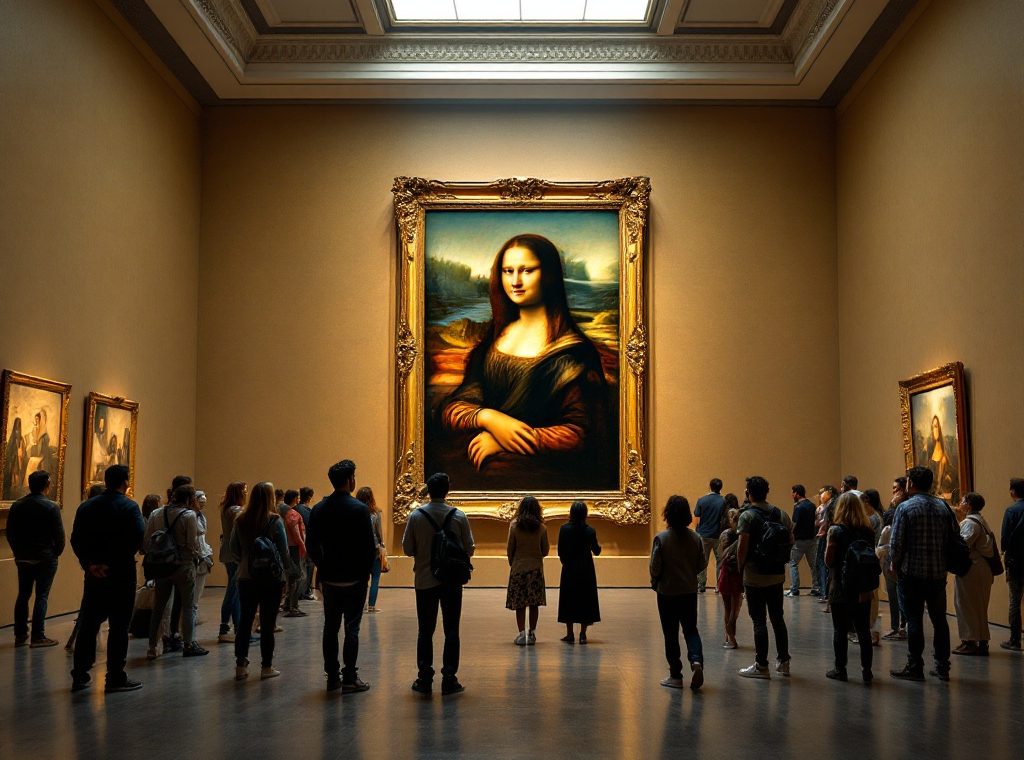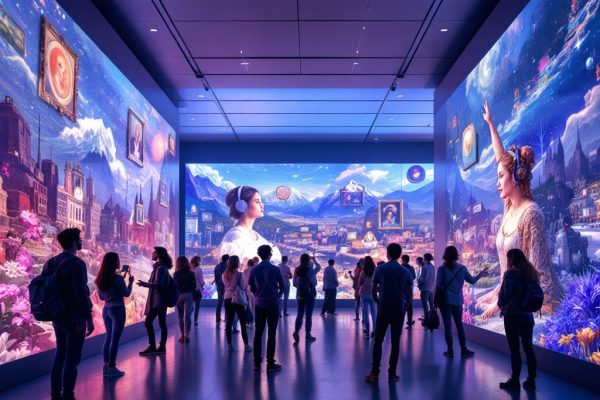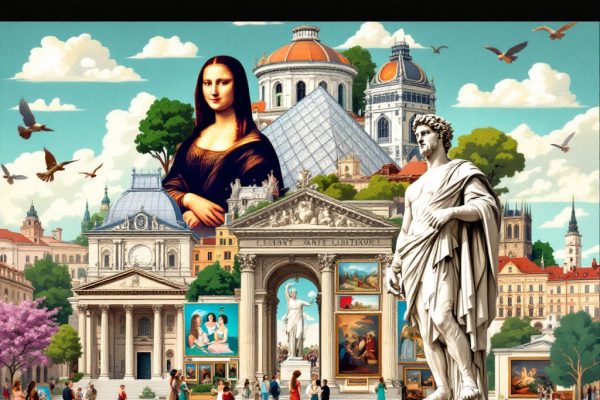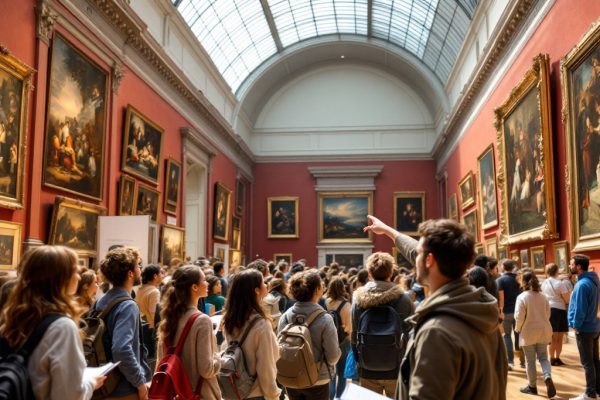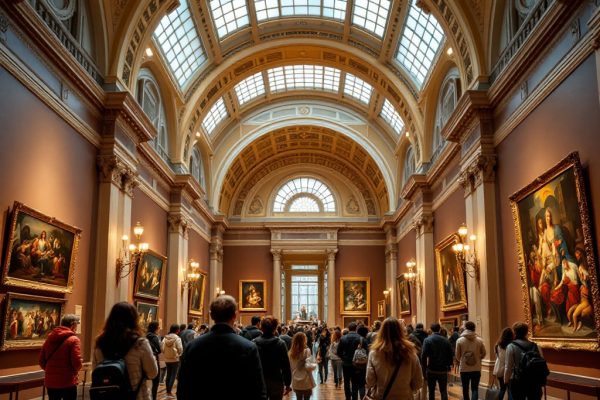Famous Artworks That Travel: How Masterpieces Reach Global Audiences
Ever wondered how iconic masterpieces like the Mona Lisa travel the world? From high-tech crates with climate control to meticulous museum installations, discover the fascinating journey of art across borders. Explore the challenges and triumphs of preserving art during transport, and how 3D museum technology offers innovative solutions. Delve into the profound cultural impact of traveling exhibitions, fostering exchange and understanding between communities worldwide. Uncover the vital role of art in bridging cultures and enriching our global heritage. Read on to explore the world of traveling art!
Important information
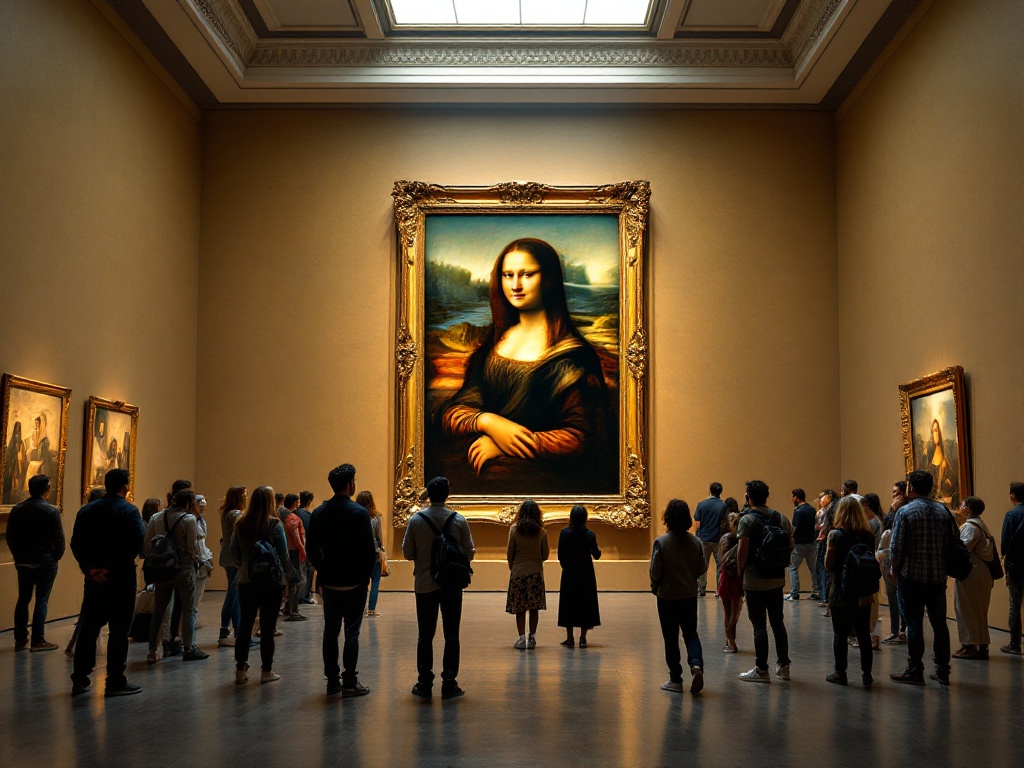
- Masterpieces travel in climate-controlled crates to protect them during transit.
- Traveling exhibitions increase art access, boosting cultural exchange and education.
- 3D museum technology offers a sustainable way to experience art without transport risks.
- These exhibitions benefit host communities through tourism and educational opportunities.
- Art serves as a bridge between cultures, fostering dialogue and understanding.
The Global Journey of Iconic Artworks
Iconic masterpieces such as the Mona Lisa, Starry Night, and The Last Supper grace museums and galleries worldwide, offering countless viewers a powerful and inspiring experience. Seeing these works firsthand can be profoundly educational. This global circulation of art fosters cultural exchange while highlighting the crucial importance of art accessibility for everyone.
How Masterpieces Are Transported and Displayed Worldwide
Museum masterpieces travel the world in specially designed crates that protect them from vibrations and maintain a stable temperature and humidity. These high-tech containers often use advanced suspension systems and climate control to ensure the artwork’s safety.Once at the museum, trained professionals carefully install the pieces in secure display cases, protecting them with controlled lighting and environmental conditions. These preservation efforts help keep the art vibrant for future generations.
Traditional Museum Visits
Viewing artwork in person offers a direct, sensory experience, allowing you to appreciate the scale and presence of the pieces firsthand.
3D Museum Technology
This innovative approach provides virtual access to museum collections worldwide, allowing you to explore intricate details often missed during in-person visits. This digital experience enhances traditional museum visits, making art appreciation more accessible and engaging.
The Challenges of Maintaining Art Integrity During Travel
Transporting artwork is a delicate operation with inherent risks. Maintaining stable temperature and humidity levels is crucial for preservation. Safeguarding pieces from physical damage during transit is paramount. Navigating international customs regulations adds complexity. Specialized transport, meticulous packing, and climate-controlled environments are essential for secure travel. Security is a primary concern, as theft and damage pose significant threats.
Challenges of Traditional Art Transportation
- Maintaining stable temperature and humidity,
- preventing physical damage during transit,
- navigating complex international customs regulations,
- ensuring security against theft and damage.
The 3D Museum Solution
3D museums offer a compelling alternative, allowing art enthusiasts to experience masterpieces without the risks of physical transportation. These digital spaces provide immersive encounters while preserving the original artwork’s integrity. This innovative approach offers a sustainable method for sharing art globally.
Preservation and Conservation Techniques for Traveling Art
Protecting traveling artwork requires a multifaceted approach to preservation. Climate-controlled crates and tracking systems are crucial for safe transport, safeguarding pieces during their journey. Digital tools streamline inventory management, while conservation advancements maintain optimal conditions during travel and installation. 3D museum technology offers innovative ways to preserve and display art, opening exciting new possibilities. Traditional methods like meticulous handling and packing remain essential. Together, these combined efforts ensure art can be appreciated by global audiences.
Preservation through Innovation
Modern preservation methods blend cutting-edge technology with time-tested practices, climate-controlled crates, and advanced tracking systems ensure safe transport. Digital tools streamline inventory and conservation advancements maintain optimal conditions during travel and installation.
Accessibility for Global Audiences
3D museum technology offers innovative ways to preserve and display art, creating new opportunities for engagement. Combined with traditional methods like meticulous handling and packing, these efforts ensure art can be appreciated by wider audiences.
The Cultural Significance of Traveling Art Exhibitions
Traveling art exhibitions play a vital role in cultural exchange and the preservation of our shared heritage. They offer artists international exposure, expanding the art market and encouraging dialogue between communities. Showcasing renowned artwork in various locations facilitates the exchange of artistic concepts and cultural legacies, fostering respect and appreciation for diverse traditions. These exhibitions also significantly benefit host communities by attracting tourists and boosting local economies. They provide invaluable educational opportunities, inspiring local artists and nurturing a deeper understanding of art, promoting cultural engagement and participation.
Benefits for Artists and Communities
Traveling exhibitions provide artists with international platforms, expanding the art market and fostering cross-cultural dialogue. They showcase renowned artwork in diverse locations, sharing artistic concepts and cultural legacies. This cultivates respect and appreciation for various traditions, enriching the global art scene.
Economic and Educational Impact
Host communities benefit greatly from these exhibitions through increased tourism and economic stimulation. They offer invaluable educational opportunities for local artists and the public, fostering a deeper understanding of art and promoting cultural engagement.
Museum Preparation
Museums meticulously research the artwork and design suitable display environments. They develop educational programs and collaborate with lending institutions to manage logistics, including transportation and installation.
Enhanced Visibility and Appreciation
Travel significantly increases the visibility of renowned artwork, exposing it to wider audiences. This enhances appreciation and creates valuable opportunities for cultural exchange and education, allowing viewers to learn about the art’s historical and cultural context in different settings.
Fostering Dialogue and Understanding
Traveling exhibitions foster dialogue and understanding between cultures by sharing artistic ideas and heritage. This promotes respect for diverse artistic traditions and enriches appreciation for various artistic styles and historical periods.
Art as a Bridge Between Cultures
Art serves as a bridge between cultures, facilitating communication and understanding. Exhibitions introduce audiences to new perspectives and artistic expressions, enabling them to explore diverse cultural values and beliefs through art.
Broadening Access and Appreciation
By broadening access to art, traveling exhibitions enhance appreciation for diverse artistic styles and provide enriching educational opportunities. They deepen viewers’ understanding of art history and cultural contexts, inspiring creativity and fostering greater engagement with the art world.
Art as a Tool for Cultural Exchange and Heritage Preservation
Traveling art exhibitions foster powerful cultural exchange, sparking dialogue and understanding between diverse communities. Showcasing renowned works, like the Mona Lisa and Van Gogh’s Starry Night, allows people to share artistic concepts and heritage, building respect and appreciation for various traditions. These international showcases are often organized by institutions facilitating loans between museums, creating opportunities for both exchange and preservation. This exchange significantly impacts the art world, fostering dialogue between traditions and encouraging global collaborations.
Benefits for All
Exhibiting art internationally benefits everyone involved. It promotes tourism and enhances cultural education. It also generates interest in local art scenes while simultaneously preserving artistic legacies.
Mutual Gains
Ultimately, both the artwork and the host country gain immensely from these exchanges.
The Role of Art in Cross-Cultural Exploration
Art offers a glimpse into diverse cultures, unveiling their values, traditions, and unique perspectives. Artistic hubs like Paris, New York, and London inspire creators and foster cultural exchange through exhibitions and world-class museums. These cities, rich in artistic heritage, showcase a wide range of art from across the globe. Iconic masterpieces, such as the Mona Lisa and Van Gogh’s Starry Night, have traveled the world, demonstrating art’s ability to transcend boundaries and connect diverse audiences. Cultural institutions play a crucial role by facilitating loans, organizing exhibitions, and nurturing international partnerships. These efforts create opportunities for cross-cultural dialogue and understanding, ultimately fostering global connections.
The Impact of Traveling Exhibitions on Art Appreciation
Traveling exhibitions democratize art by offering intimate encounters that ignite curiosity and understanding. This exposure can inspire further exploration, allowing individuals to discover diverse artistic expressions. Beyond personal enrichment, these exhibitions invigorate local economies through tourism and increased museum attendance. Moreover, they create opportunities for cultural exchange, fostering dialogue among artists, curators, and communities.

